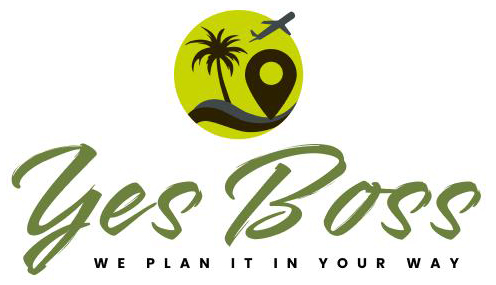Attractions
Sri Lanka is a beautiful island with many fun outdoor activities to enjoy. If you like water sports, you can try surfing, jet skiing, or snorkelling in places like Hikkaduwa, Unawatuna, or Bentota. The island has warm and clear water that is perfect for these activities. Hiking is another popular activity in Sri Lanka. The central highlands offer some of the best hiking trails, such as Adam’s Peak, Knuckles Range, and Horton Plains. These hikes offer amazing views of the island’s landscapes and wildlife. Ayurveda and wellness are an important part of Sri Lanka’s culture. You can find Ayurvedic treatments, like massages, herbal baths, and yoga, at many wellness centres and spas throughout the island. These treatments aim to help you feel better physically and mentally.
Sri Lanka has some of the most beautiful beaches in the world, such as Mirissa, Tangalle, and Arugam Bay. These beaches have golden sand and clear water, and offer exciting activities like whale watching and surfing. Finally, Sri Lanka’s national parks are a must-see attraction. Yala National Park is famous for its leopards, while Udawalawe National Park is known for its elephants. Other national parks, like Wilpattu and Minneriya, let you see a variety of wildlife, such as birds, reptiles, and mammals. Sri Lanka is a perfect destination for adventure enthusiasts and nature lovers. Its water sports, hiking, Ayurveda and wellness, beaches, and national parks attractions provide a unique and unforgettable experience for anyone visiting the island.
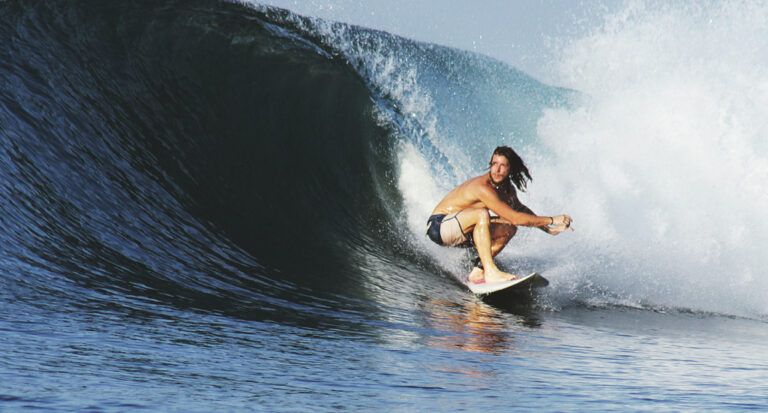
Water Sports
Sri Lanka is one of the best islands in the world to go for water adventures as it has always been renowned for water-based activities that allow all water sport lovers to have fun/ own enjoyment or discover the richness of the tropical waters of the Ocean around Sri Lanka. Some thrilling experiences of Snorkelling, Banana boat & Jet Scooter rides will give you memories to remember forever.
Here are some of best activities in Sri Lanka
Banana & Tube Rides
The best fun activities for families with low risk and high entertainment. A long banana shaped tube is pulled by a motor boat at a very high speed, giving you the thrill of your life. You will be sitting atop an inner tube and towed by the watercraft across the water. Both recreational activities are perfect for small families who want to have fun together
Snorkelling
The whole of the south coast of Sri Lanka is filled with such adventurous sports and you can span like for 3 nautical miles in a length when snorkelling in Sri Lankan waters. For the less adventurous on-shore coral reefs are ideal for snorkelling. The abundant marine life found around the island is surpassed only at Hikkaduwa in the southern coast where the reef is thought to contain more species of fish than the Great Barrier Reef.
Surfing
Is one of the famous activities in Sri Lanka. Peel off the waves with your surf and let the thrilling adventure experience begin in the warm water of the beaches like Hikkaduwa, Unawatuna, Weligama beach, Arugam Bay and more to name. The experience of surfing in Sri Lanka will be an unforgettable experience for a lifetime.
Jet Skiing
Jet Skiing is one of the greatest water sports for those who love to race against the strong tides and fly through the misty sea. Struggle with Experience
Kite Surfing
Kite Surfing experience in Kalpitiya Lagoon will be an amazing experience. This Lagoon is one of the most popular and the best place for freestylers and beginners. There are several schools where trained professionals can teach the art of Kite Surfing for everybody to try this adventure sport.
White Water Rafting
White Water Rafting in Kitulgala on Kelani River is a worthwhile experience to try in Sri Lanka. It offers grade three rapids making it a completely thrilling adventurous experience for both the beginners and intermediate rafters.
Diving
The ocean around Sri Lanka whispers tales bygone, ones of regal maritime visits, of bandits and pirates and journeys of explorers and spice merchants. As you plunge into the warm waters and dive below, these stories come to life. The crystal clear waters of the Indian Ocean with a visibility of 20 metres (65ft) provide perfect conditions for diving. With wrecks as dated as the 18th Century dotting the seas, deep reefs and reef walls provide enthralling explorations for scuba divers.
Deep-Sea Fishing
As the waves plummet the sides of the boat and the sea birds call above your head, the ocean’s scent and the thrill of the chase is exhilarating.
Shark, Marlin, Tuna, the big names in deep-water game fishing roam Sri Lanka’s deep seas. Closer to shore the calmer waters teeming with a variety of species, and the hospitable local fishermen are only too willing to invite visitors to join them on their daily or nightly excursions off the coastline.
Whale Watching
The ever smiling, mischievous dolphins will put on a show while some of the oldest and the largest sea creatures, the humpback and the blue whales, will nonchalantly glide past you, when you embark on a whale/ dolphin watching excursion off the Southern, Eastern or the West coast of Sri Lanka. The ideal locations for whale watching would be Dondra Point (accessible from Galle, Hikkaduwa and Mirissa) and Trincomalee while the sea off Kalpitiya teems with an abundance of dolphins.
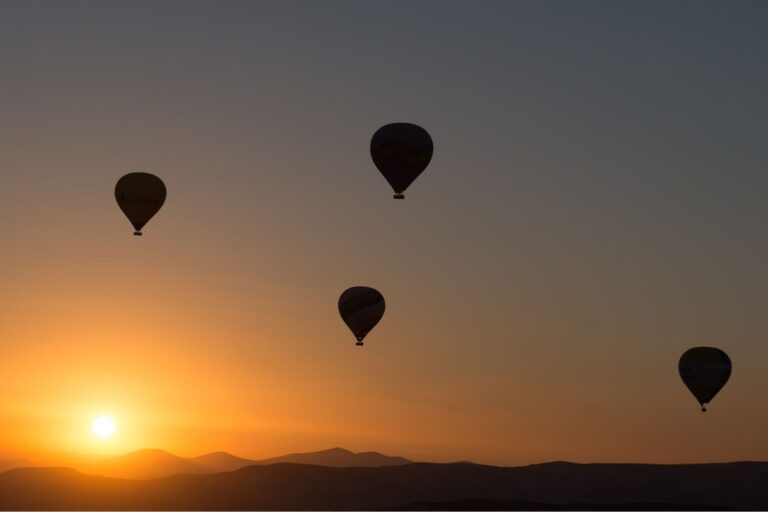
Hot Air Ballooning
As the multi-coloured hot-air balloon drifts silently above the forest, adventure takes on a whole new meaning.
Startled by the noise of a sudden burst of gas keeping the balloon aloft, a couple of peacocks take flight directly below the balloon’s basket, their outrageously long iridescent blue and emerald tail feathers streaming behind like a psychedelic jet stream. Several deer dart nervously across a clearing below, but the small herd of elephants continues feeding, utterly unfazed by this aerial intruder.
Balloons that travel with the wind, make for one of the most surreal and tranquil sensations of flight. Following the initial adrenaline rush of the take off, one could settle down to absorb the wonder of the colourful earth below.
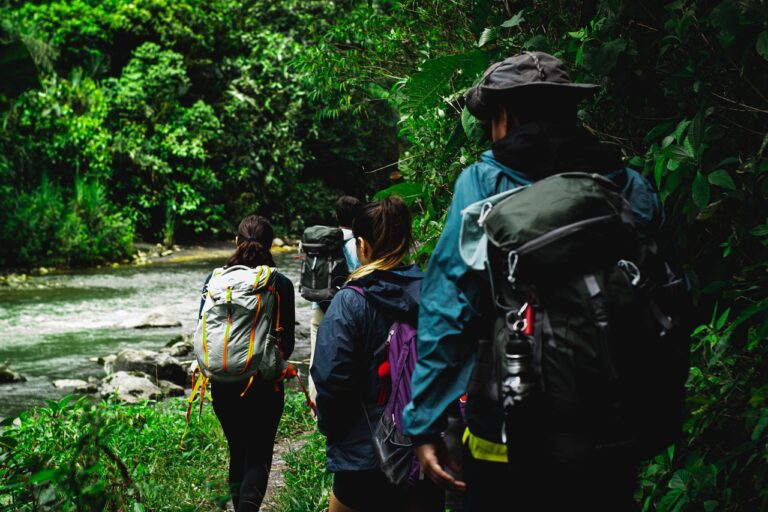
Hiking and Trekking
Take a demanding trek high in the mountain rainforest of the Knuckles Range, and see the valuable spice – cardamom – growing in the forest, catch sight of rare orchids and birds, and enjoy the exhilaration of exploring spots where few have been before. Traverse virtually unexplored country in the southeast, past the renowned Yala National Park where leopards prowl and elephants roam, past the bird-rich Kumana wetlands and into a region where literally hundreds of ruined temples and maybe even cities lie awaiting discovery in the forests.
Sri Pada (Adam’s Peak) hike
This mountain is located in the southern reaches of the Central Highlands and the surrounding region is largely forested hills, with no mountain of comparable size nearby. The region along the mountain is a wildlife reserve, housing many species and endemic species. Most local people believe dwarf elephants (kuru ali) live in this Samanala forest.
Adam’s Peak is important as a watershed. The districts to the south and the east of Adam’s Peak yield precious stones—emeralds, rubies and sapphires, for which the island has been famous, and which earned for its ancient name of Ratnadeepa.
The peak pilgrimage season is in April, and the goal is to be on top of the mountain at sunrise, when the distinctive shape of the mountain casts a triangular shadow on the surrounding plain and can be seen to move quickly downward as the sun rises.
For Buddhists, the footprint mark is the left foot of the Buddha, left behind when Buddha visited Sri Lanka, as a symbol for worship at the invitation of Buddhist God Saman.
Climbing at night can be a remarkable experience, with the lights of the path leading up and into the stars overhead. There are rest stops along the way. The mountain is most often scaled from December to May. During other months it is hard to climb the mountain due to very heavy rain, extreme wind, and thick mist.
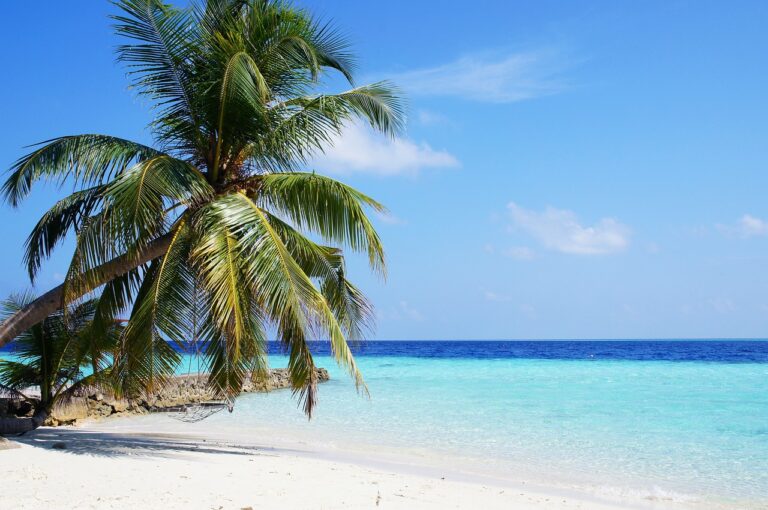
Beautiful Beaches
Beruwala & Bentota Beach
A lagoon set in the tropical greenery, River Bentara Ganga dotted with islets rich in birdlife. Rich tourist destination with lots of luxury resorts with spa facilities to meet clients’ expectations for ayurvedic treatments and other health and beauty treatments.
Not only relaxing here is a prominent place offering watersports including swimming, water skiing on the rivers or estuaries, snorkelling, scuba diving, windsurfing, parasailing and fishing.
Kosgoda Beach
At night marine turtles come ashore, dig a hole and lay their eggs, covering them up before heading back to see. To avoid predatory acts, several private turtle hatcheries have been set up along the coast. Visitors can see huge tanks filled with newborn turtle hatchlings.
After being fed, the baby turtles are taken to the sea and released when they are 2-4 days old, usually during the safer hours of darkness. Although October to April is the main laying season, some eggs can be found at Kosgoda throughout the year.
Weligama Bay
Rated by Forbes magazine as amongst Asia’s Best Beaches. In fact a lovely place where local fishermen have adopted an almost unique way of fishing, located on Sri lanka’s picturesque south coast.As you approach Weligama along the coast road east from Galle will encounter Sri Lanka’s famous stilt
fishermen. Each fisherman has a long pole with a crossbar that is stuck in the seabed close to the shore. The fishermen wade or swim out to these poles at times when the sea and fish are running in the right direction.
Koggala Beach
Koggala Beach is one of the longest beaches in Sri Lanka. The beach of Koggala is a tidy tourist destination. The beach is a nesting area for marine turtles who visit the island during the breeding season, Although the opportunity to actually see the laying process is very rare, The ancient practice of stilt fishing on the coastlines, may be seen at Koggala beach.
Koggala Beach is 8 km from Galle City and 130 km from Katunayake Airport. You can reach koggala by Road, plane and sea. A Large dry season begins from December to March, and the Small dry season begins from July to August.
Jungle Beach
This place has Golden sandy shore and rich bio-diversity backgrounds and is suitable for swimming without waves. The beach is rich with coral reefs and marine biology. Rumassala mountain is closer to jungle beach. Rumassala is famous for tourists and naturalists because “jungle beach” is filled with many uncommon birds, animals, plants, as well as this place famous for rare medicinal plants.
According to Ramayana legend the Rumassala Rock is part of the Himalayan range that was brought by “Hanuman” to heal the wounded battalions in order to obey the request of King Rama,The beach is located about 7.5 km from the main city, Galle. and a few kilometres from Rumassala. reached by a climb up Rumassala mountain and then by trekking down through greenery through a small route which leads to the beach. The beach is small and secluded. Snorkelling is also a great thing to do in this area, you should take snorkelling equipment.
Unawatuna Beach
It is a suburb of Galle, about 5 kilometres (3.1 mi) southeast to the city centre and approximately 108 kilometres (67 mi) south of Colombo’s Bandaranaike International Airport in Katunayake. Unawatuna is situated at an elevation of 5 metres (16 ft.) above the sea level. According to the Ramayana legend the Rumassala Mountain is a piece of Himalaya in India. In the epic, the monkey-warrior Hanuman was sent back to India to fetch the four medicinal herbs from the Himalayas in order to heal prince Lakshman. Hanuman failed to identify these herbs, so he lifted the entire mountain and carried it to the battlefield to try to save Lakshman, but in the process, a chunk of it “fell-down” in the location of the present day Unawatuna, the name of the village derives from “Una-watuna” meaning “fell down”.
Unawatuna is rich in its biodiversity. Over sixty species of endemic birds, including terns, egrets, herons, sandpipers and kingfishers, as well as rare species such as the lesser whistling duck, the Asian palm swift, the white-breasted waterhen, the Loten’s sunbird and the black bittern have been sighted in the locality by the ornithologist, Clive Byers. These birds are mostly sighted in the remaining marshy area and Rumassala Hillock. Off the coast of Unawatuna, beneath the Indian Ocean lies a number of coral reefs, shipwrecks, and a great variety of fish and turtles. The turtles still wade onto the shore to lay their nests and eggs, and at times, as if to lay first claim to the sandy shore now invaded by the tourists and dotted by restaurateurs, even go right into the beachfront restaurants. The Rumassala coral reefs at the east end of the Galle Harbor attract divers, Eco treks in the shrub jungles of Rumassala are also available.
Hikkaduwa Beach
Hikkaduwa is one of the best surfing spots in Sri Lanka, offering a clear hot water base. The waves vary in size from 4 to 11 feet. Surfing in the Hikkaduwa area is fairly well known and gets the best surfing during its dry season, which is from November to March. There are 4 hotspots in Hikkaduwa. Scuba diving and diving in clear waters are a major pastime along this stretch and is the most ecological way to see the colourful fish that dart around. The coral sanctuary along the coast of Hikkaduwa is a large shallow body of water surrounded by a reef, decorated with layers of multicoloured corals, and is home to countless colourful fish. Off the beach there is a collection of small islets surrounded by beautiful coral formations. Many species of fish and large turtles are found here. There are more than four different shipwrecks for diving enthusiasts to explore as well as diving shops offering PADI courses and equipment
There are so many hotels, shops, bars, restaurants and guest houses. The beaches are beautiful and wide and swimming is safe here, although the currents are stronger when it comes south of Hikkaduwa. The impressive coral reef lies just offshore and is still populated with exotic fish and sea turtles. Glass bottom boats are available for visitors who want to admire the wonders of the deep while keeping their feet dry! After a short distance south of the centre of the reef, it decreases and begins a wider sandy beach with good waves ideal for board surfing and body surfing. There are many shops selling masks, jewellery, batik, antiques, etc. with several Buddhist temples, all of which add spices to life in Hikkaduwa.
Negambo Beach
Negambo is a well-known fishing town and also a famous tourist destination. It is an ideal beach for morning or evening walks and witness breathtaking sunsets. There was once a small fishing town that became the first resort of the country. It was used as the main export port for cinnamon by the Portuguese, the Dutch and the British.
The town of Negambo is worth a visit for its colonial charm. The sandy beach is frequented by tourists and locals and you will find many fishing boats lined up on the shore. This place is the best spot for kitesurfing, snorkelling and scuba diving.
This beach town is easily accessible from E03 expressway while leaving from Colombo to the airport or after arrival in Sri Lanka. Best Time To go to Negambo beach, November – April (Winter Season) and May – October (Summer Season). The Negombo Beach Festival is held on every consecutive year in July.
Kalpitiya Beach
The beach is a famous place to watch whales and dolphins and snorkel with beautiful corals. To explore the hidden wonders around the beach, the perfect way is by boat ride. visitors can canoe and also ride a 4WD jeep along the deserted sand dunes between the ocean and inland.
Beach is bestowed with natural beauty however it is unspoiled by tourism and the surrounding fishing community.
Sports activities such as Kitesurfing, Stand Up Paddling, Horse Riding, diving, skateboarding and surfing are standard around the islands. This beach is the best way to enjoy the evening sunset. There are a total of 14 islands in the sea and in the lagoon.
Kalpitiya is located 130 km north of the Bandaranaike International Airport in Katunayake. This journey will take 4 and half hours. From November to April, you will see calm sea and weather. February to March is the best time to whale and dolphin watching.
Nilaveli and Uppaveli
The Bay of Trincomalee’s harbour is renowned for its large size and security; unlike every other in the Indian Sea, it is accessible to all types of craft in all weathers. The beaches are used for surfing, scuba diving, fishing and whale watching. The city also has the largest Dutch fort in Sri Lanka. It is home to major Sri Lankan naval bases and a Sri Lankan Air Force base.
On the North East Coast of Sri Lanka, Nilaveli is a pristine covered with white sands and gentle waves slip softly to shore and is the ultimate getaway for those who wish for quiet bliss on a tropical heaven, far away from the cares of life. Uppaveli is one of beautiful, sensible and calm beaches closer to Trincomalee with plenty of fairly comfortable accommodation options.
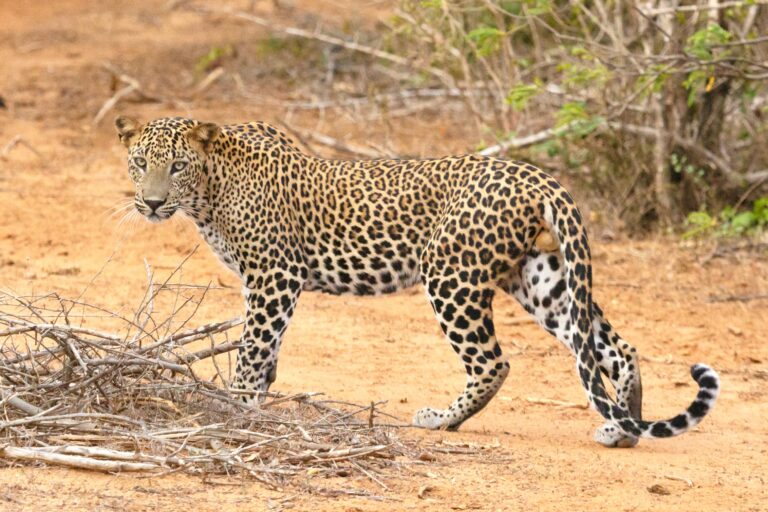
National Parks
Pigeon Island National Park
The national park contains some of the best remaining coral reefs of Sri Lanka. This national park is the 17th in Sri Lanka. The island was used as a shooting range during the colonial era. Pigeon Island is one of the several protected areas affected by the Indian Ocean tsunami in 2004.
Pigeon Island consists of two islands; large pigeon island and small pigeon island. The large pigeon island is fringed by a coral reef, and is about 200 m long and 100 m wide. The national park is situated within the dry zone of Sri Lanka. You can see over 100 species of coral and 300 coral reef fish recorded in the area. Sea Turtles and Blacktip Reef Sharks are also commonly seen in the shallow coral areas.
To reach Pigeon Island National Park, visitors must rent a boat from Nilaveli Beach and then take a one hour trip to the island. The charges for visiting Pigeon Island National Park entry fee adult/child US$10/5, service charge per group US$8 and charge per boat Rs 125.There are boat operators who will charge Rs 1500/- 1800/- for a return trip to the island. These can be organised outside hotel arrangements. The islands are looked after by the Navy. You can visit the Pigeon Island National Park every day from 9 a.m. to 5 p.m. You can also buy goggles and other swimming equipment.
Arugambay & Pottuvil Point
Arugam Bay is a page from a surfer’s dream book where the shore is white and wide, surf is high and the waters clear and unspoilt beach line stretching for miles. The best, lesser known and hard to get is the Peanut Farm to where the journey takes you through a forest inhabited with elephants. Nearly a 20 minute drive through the forest brings you to the clearest and the most beautiful beach ever to be created.
Arugam Bay is a page from a surfer’s dream book where the shore is white and wide, surf is high and the waters clear and unspoilt beach line stretching for miles.
Arugam Bay is at its best at sunrise when the sky and the beach provide a festival of colours. Fishing boats returning after the night catch, famous jumping fishes heading towards the beach and fishermen waiting with baited lines all join hands to make the perfect picture of a day break.
Most of the people in Pottuvil are fishermen and have returned to their vocation with the dawn of peace. Thus, Pottuvil is also the seafood paradise today with delicacies like prawns, cuttlefish and crabs available at every food outlet!
The beaches are also ideal for sea baths although the waves could be too strong for an amateur.
The surfing season in Arugam Bay starts in April and ends in October. There are four main surf points in Arugam Bay including Arugam Point and Crocodile Rock. Although all of them provide a diverse experience of the sea, the sand and surf, the ultimate experience is the Peanut Farm or Pottuvil Point.
A long, deserted, sandy beach dotted with some huge boulders at the water’s edge make these waves a favorite with some of the seasoned veterans. Pottuvil Point provides 800 metre rides from the outside section right through to the beach on the inside.
The magic about these waves is that for the most of it, a surfer can be working a four foot face and be only a few metres from the beach as the wave grinds down the sandy point. The outside section sucks up and throws out as the swell raps into the point giving a 30 metre wall to work with before it fades as it hits deeper water for about 10 seconds. The surf increases into the day so be sure to be at the beach by ten in the morning.
Surfers and visitors are often helped and hosted by small communities of fishermen who live in wooden huts among the forest and who are also keen to maintain the beach which is still heavenly.
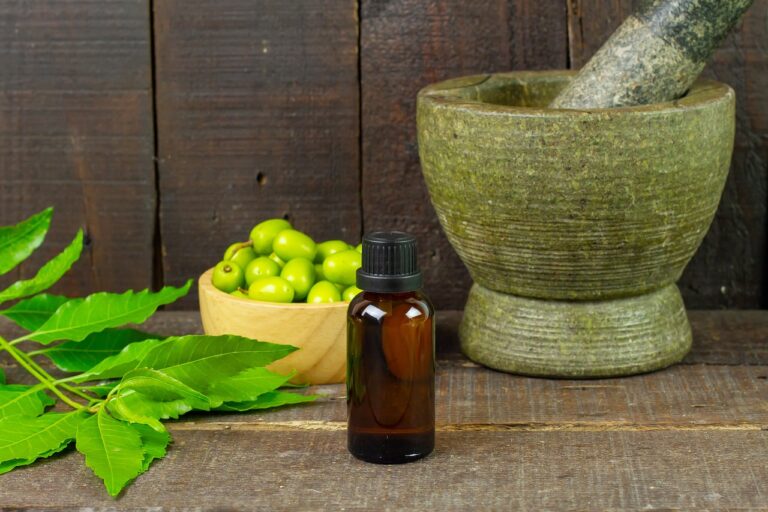
Ayurveda and wellness
Pink frangipani flowers float in terracotta bowls, their sweet fragrance a counterpoint to the earthy herbal notes of the oil being gently massaged into your feet and body. As you lie on a neem wood table, with dried neem leaves hanging from the ceiling to purify the air, you slip into that elusive state where body and mind are in complete harmony, the only reminder of the outside world being the soft sigh of the Indian Ocean in the background.
One of the world’s oldest forms of healing, Ayurveda — derived from the Sanskrit words for life (ayuh) and knowledge or science (veda) — originated in India more than 3,000 years ago and soon spread to Sri Lanka, where Sinhalese kings established Ayurveda treatment centres in the ancient cities of Anuradhapura and Polonnaruwa.
In Ayurveda, a combination of herbs, diet, massage, hydrotherapy and oil treatment is used to treat everything from stress to diabetes, migraine, asthma, arthritis and high blood pressure. Ayurveda specialists will tell you that this form of treatment also helps boost the immune system, promotes a general sense of well-being and even helps delay the ageing process.
With many in the West turning from medicine which treats only the body, towards a more holistic approach, Sri Lanka has become a destination for those seeking solace in the Ayurvedic principle of body, mind and soul.
